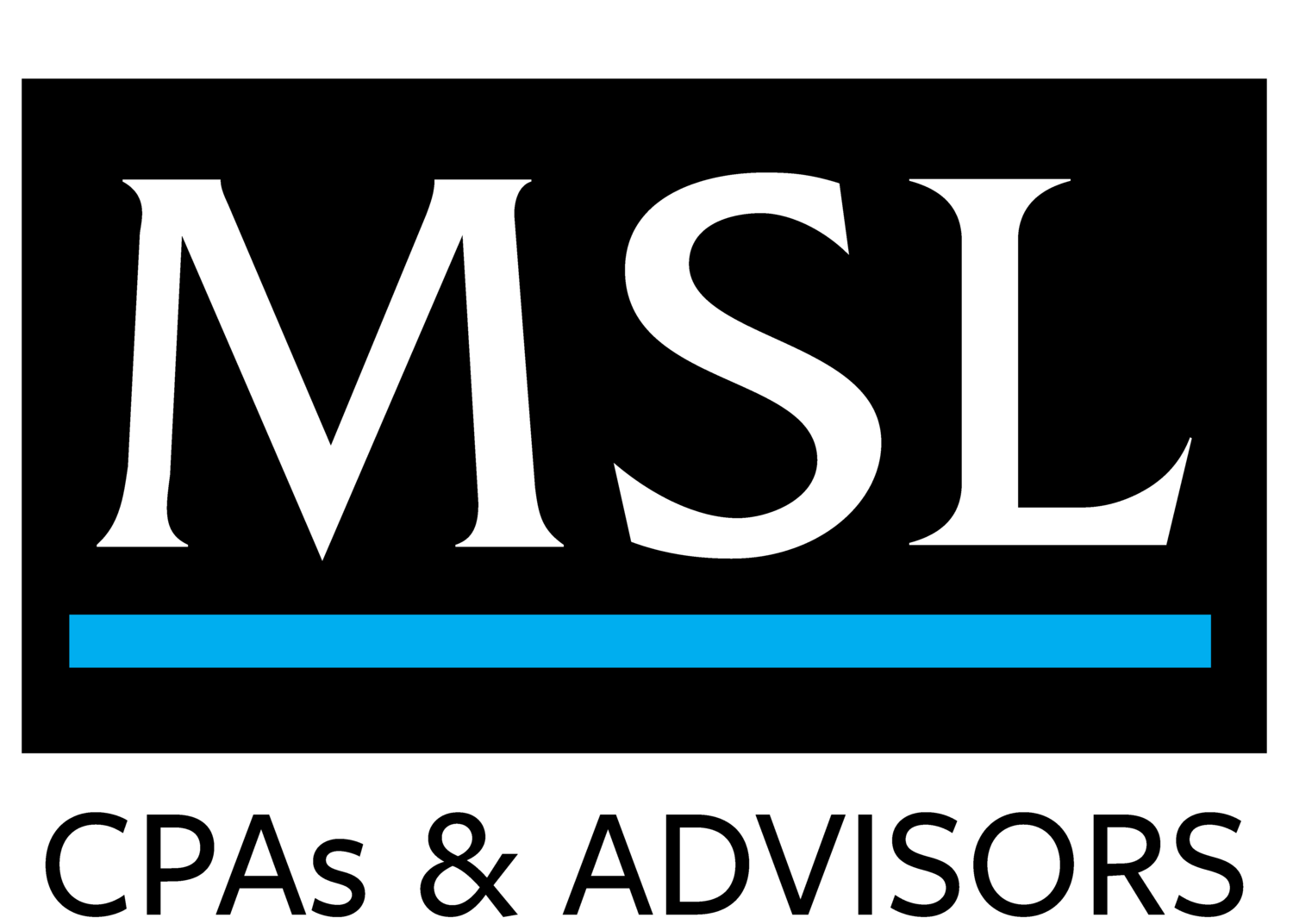MSL CPAs Advisory Services Alert
/The Senate has passed a House-approved reform bill, (H.R. 7010) The Paycheck Protection Program Flexibility Act (the "Act"), that makes major changes to the Paycheck Protection Program (PPP) created under the CARES Act. The President is expected to sign it into law. The most significant change is that businesses will now have the option to use 24 weeks, rather than the original 8 weeks, to spend their loan money and still qualify for loan forgiveness.
There are 5 main changes in the reform bill are:
1. Covered Period Extended to 24 Weeks
This has been extended from the original provision where the borrower had to spend the loan amount within eight weeks of receiving it. Now the covered period can be extended to 24 weeks after loan origination but cannot go beyond December 31, 2020.
2. Payroll Cost Spend Requirement
Previously, borrowers had to use at least 75% of their PPP loan on payroll costs to obtain maximum loan forgiveness. This threshold has been lowered to 60%, but now borrowers must meet this threshold to receive any forgiveness of their PPP loan. If a borrower uses less than 60% of their loan on payroll, none of their loan will be forgiven. As a reminder, the original loan amount is based on 10 weeks of payroll and the now extended covered period is 24 weeks.
3. New Exceptions to Forgiveness Reduction Based on Full-Time Equivalent Employees
The CARES Act said the forgiveness amount would be reduced if the borrower lost full-time equivalent employees (FTEs) during the covered period relative to the base period. Or secondarily if the borrower significantly reduced the average annual salary or hourly wage of certain employees during the covered period relative to the first quarter of 2020. For their loan to be fully forgiven, borrowers had to restore FTEs and wages to their original level by June 30, 2020. That deadline has been extended to December 31, 2020. Additional guidance is needed to determine if this extended safe harbor date is as of December 31 or if the borrower can claim the safe harbor was met prior to that date.
However, the new law provides some exceptions to the FTE reduction provision . Borrowers will not face a reduction if they can document one of the following:
(a) the borrower is unable to rehire a terminated employees who were employees on February 15, 2020
(b) the borrower is unable to hire a similarly qualified employee to replace the terminated employee on or before December 31, 2020;
(c) the borrower is unable to restore business operation levels to their February 15, 2020 operation levels as a result of COVID-19 related operating restrictions (i.e. if business can only operate at 50% capacity by state order). This will be a tremendous help to businesses that remain fully or partially closed.
4. PPP Proceeds that are converted to Loans
(a) New Loans will have a 5-year maturity. Existing loans may have the maturity extended if the lender and borrower agree.
(b) Interest Rate remain at 1%.
(c) Loan payments deferred until SBA determines amount of forgiveness.
5. Payroll Tax Deferral
The law originally stated that businesses could defer the employer portion of their 2020 social security payroll taxes to December 31, 2021 (50%) and December 31, 2022 (remaining 50%). However, once a business had its loan forgiven, it was no longer eligible for this deferral.
Under the new law, all borrowers can defer their 2020 social security tax burden to 2021 and 2022, even if they have received loan forgiveness by December 31, 2020.
Note:
There is still action in Congress to address the deductibility of expenses paid in conjunction with funds expended from forgiven amounts. We continue to monitor developments in this area and will advise when Congressional action has been taken. In addition, there are a number of unanswered questions and additional guidance and a revised loan forgiveness application will be coming from the U.S. Treasury.
As always, if you have any questions or if we can be of service, please do not hesitate to contact your MSL, P.A. representative.






